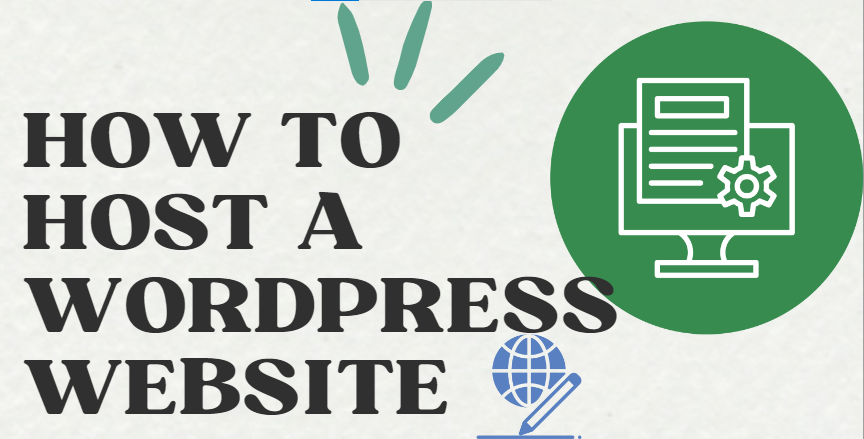
WordPress is a tool that helps individuals and organisations create websites easily.
It’s like a system that manages content on your website.
Its benefits include being user-friendly, offering many design options, and having lots of features to customize your site.
There are two main ways to host a WordPress site:
WordPress.com: This is a hosted option, meaning WordPress hosts your site for you.
It’s easy to set up but has limited customization options.
WordPress.org: This is a self-hosted option, where you find your own hosting provider.
It gives you more control and flexibility over your website.
The article focuses on setting up a self-hosted WordPress.org website.
I will guide you through the process of finding a hosting provider and launching your own website.
How to Host a WordPress WebsiteChoosing a Domain Name and Web Hosting Provider
A domain name is like your website’s address on the internet. It’s what people type in their browsers to find your site.
Choosing a domain name is crucial as it’s your website’s online address, aiding in easy access and recall.
Opt for a short, relevant, memorable name, avoiding numbers and hyphens, while incorporating keywords related to your content or business.
On the other hand, web hosting provides space on the internet for storing website files, ensuring online accessibility.
When selecting a hosting provider, prioritize:
- reliable customer support
- adequate storage and bandwidth
- essential features like backups and security
- positive user reviews
- a money-back guarantee for added peace of mind
Installing WordPress
Using a one-click installer provided by most web hosting providers simplifies the WordPress installation process significantly compared to manual installation.
With a one-click installer, users access their hosting control panel, select WordPress, fill in basic information like website URL and admin details, and click “Install.”
This automated tool handles tasks like downloading, setting up databases, and configuring files, making it accessible even for beginners without technical expertise.
It streamlines the process, saving time and effort in setting up a WordPress website.
Customizing Your WordPress Website
Themes:
They determine how your site looks and feels to visitors.
Imagine them as different outfits you can easily change.
They don’t affect the content, just how it’s presented.
You can find themes for free or buy premium ones for extra features and style options.
Plugins:
Plugins are like extra tools or features you can add to your website to make it more functional.
They’re like apps for your site.
For example, if you want a contact form or a gallery, you can find a plugin for that.
You can get plugins for free from the WordPress repository, which is like an app store for WordPress.
Just like themes, they’re easy to install and can enhance your site’s capabilities.
Adding Content to Your Website
Posts vs. Pages:
Posts are for blog-like content that shows up in a feed on your website.
They’re sorted by publish date, with the newest on top.
Pages are for static information like an “About” or “Contact” page.
They don’t have publish dates and won’t show up in your post feed.
To make a post, go to your WordPress dashboard, click on “Posts,” then “Add New.”
Type your text in the editor and add media like images or videos if you want.
Hit “Save Draft” to work on it later or “Publish” to make it live.
For a page, it’s similar.
Click on “Pages,” then “Add New.”
Put in your content using the block editor, add media if needed, and then hit “Publish” when you’re ready.
Adding Media:
To add images or videos to your post or page, click on the (+) button in the editor and choose the type of media block you want to add.
Then, upload your file or choose one from your media library.
You can adjust settings like size or alignment before publishing.
Conclusion
You’ve now learned the basics of hosting a WordPress website.
Remember, building a website takes time and creativity.
Don’t be afraid to explore different themes, plugins, and content ideas to make your website unique.
There are lots of helpful tools and tips online to support you along the way, so enjoy yourself and let your creativity flow.
READ ALSO: